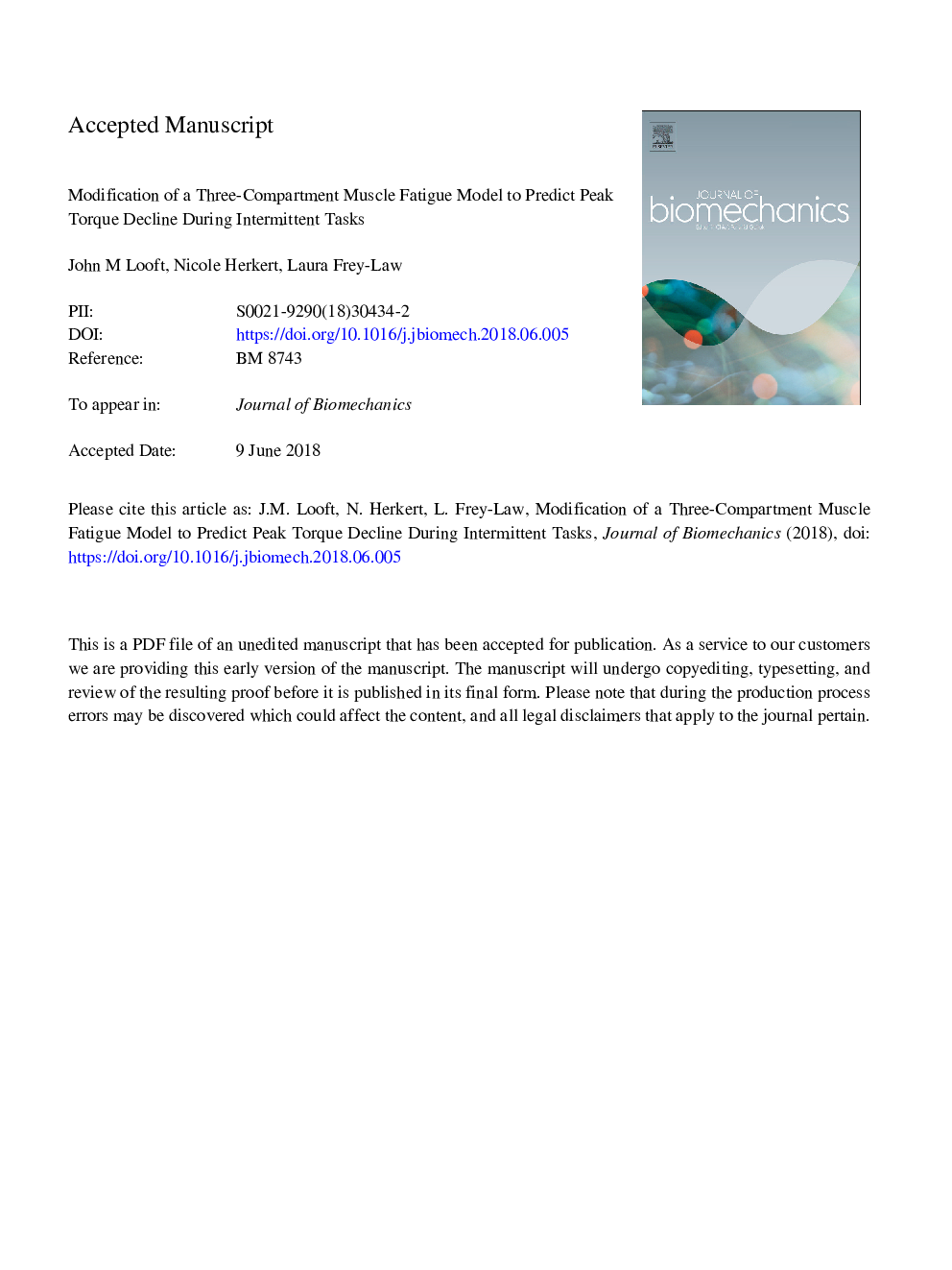| کد مقاله | کد نشریه | سال انتشار | مقاله انگلیسی | نسخه تمام متن |
|---|---|---|---|---|
| 7235554 | 1471087 | 2018 | 33 صفحه PDF | دانلود رایگان |
عنوان انگلیسی مقاله ISI
Modification of a three-compartment muscle fatigue model to predict peak torque decline during intermittent tasks
ترجمه فارسی عنوان
اصلاح یک مدل خستگی عضلانی سه قطعه برای پیش بینی افت ضربان گشتاور در طول وظایف متناوب
دانلود مقاله + سفارش ترجمه
دانلود مقاله ISI انگلیسی
رایگان برای ایرانیان
کلمات کلیدی
خستگی عضلانی، انقباض ایزومتری، متاآنالیز، مدل سازی ریاضی، ارگونومی،
موضوعات مرتبط
مهندسی و علوم پایه
سایر رشته های مهندسی
مهندسی پزشکی
چکیده انگلیسی
This study aimed to test whether adding a rest recovery parameter, r, to the analytical three-compartment controller (3CC) fatigue model (Xia and Frey Law, 2008) will improve fatigue estimates during intermittent contractions. The 3CC muscle fatigue model uses differential equations to predict the flow of muscle between three muscle states: Resting (MR), Active (MA), and Fatigued (MF). This model uses a feedback controller to match the active state to target loads and two joint-specific parameters: F, fatigue rate controlling flow from active to fatigued compartments) and R, the recovery rate controlling flow from the fatigued to the resting compartments. This model does well to predict intensity-endurance time curves for sustained isometric tasks. However, previous studies find when rest intervals are present that the model over predicts fatigue. Intermittent rest periods would allow for the occurrence of subsequent reactive vasodilation and post-contraction hyperemia. We hypothesize a modified 3CC-r fatigue model will improve predictions of force decay during intermittent contractions with the addition of a rest recovery parameter, r, to augment recovery during rest intervals, representing muscle re-perfusion. A meta-analysis compiling intermittent fatigue data from 63 publications reporting decline in peak torque (% torque decline) were used for comparison. The original model over-predicted fatigue development from 19 to 29% torque decline; the addition of a rest multiplier significantly improved fatigue estimates to 6-10% torque decline. We conclude the addition of a rest multiplier to the three-compartment controller fatigue model provides a physiologically consistent modification for tasks involving rest intervals, resulting in improved estimates of muscle fatigue.
ناشر
Database: Elsevier - ScienceDirect (ساینس دایرکت)
Journal: Journal of Biomechanics - Volume 77, 22 August 2018, Pages 16-25
Journal: Journal of Biomechanics - Volume 77, 22 August 2018, Pages 16-25
نویسندگان
John M. Looft, Nicole Herkert, Laura Frey-Law,
